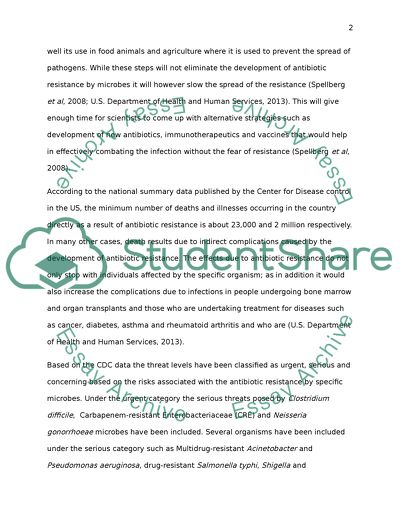Cite this document
(“ANTIBIOTIC RESISTANCE THREATS Research Paper Example | Topics and Well Written Essays - 1250 words”, n.d.)
ANTIBIOTIC RESISTANCE THREATS Research Paper Example | Topics and Well Written Essays - 1250 words. Retrieved from https://studentshare.org/health-sciences-medicine/1493190-antibiotic-resistance-threats
ANTIBIOTIC RESISTANCE THREATS Research Paper Example | Topics and Well Written Essays - 1250 words. Retrieved from https://studentshare.org/health-sciences-medicine/1493190-antibiotic-resistance-threats
(ANTIBIOTIC RESISTANCE THREATS Research Paper Example | Topics and Well Written Essays - 1250 Words)
ANTIBIOTIC RESISTANCE THREATS Research Paper Example | Topics and Well Written Essays - 1250 Words. https://studentshare.org/health-sciences-medicine/1493190-antibiotic-resistance-threats.
ANTIBIOTIC RESISTANCE THREATS Research Paper Example | Topics and Well Written Essays - 1250 Words. https://studentshare.org/health-sciences-medicine/1493190-antibiotic-resistance-threats.
“ANTIBIOTIC RESISTANCE THREATS Research Paper Example | Topics and Well Written Essays - 1250 Words”, n.d. https://studentshare.org/health-sciences-medicine/1493190-antibiotic-resistance-threats.


